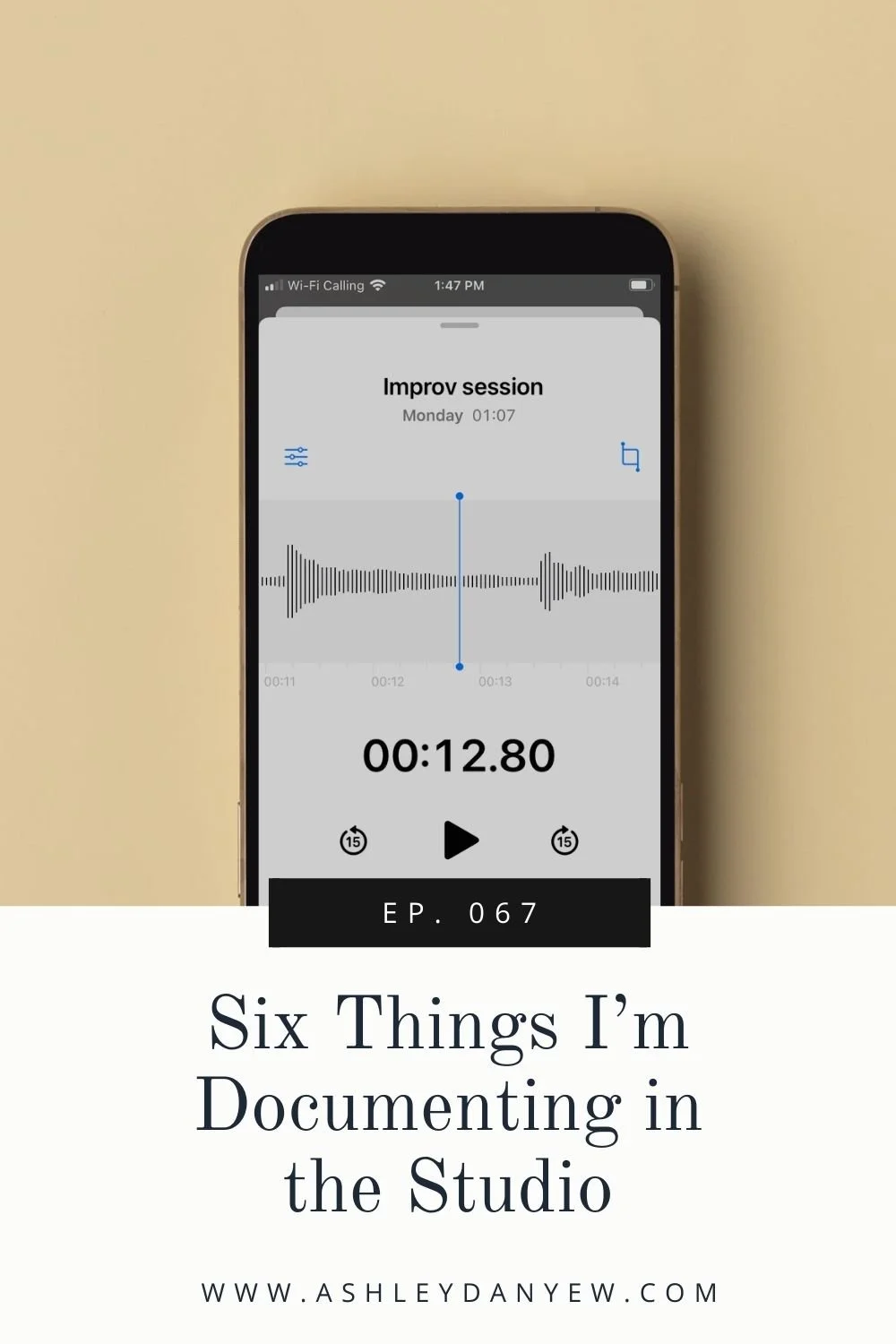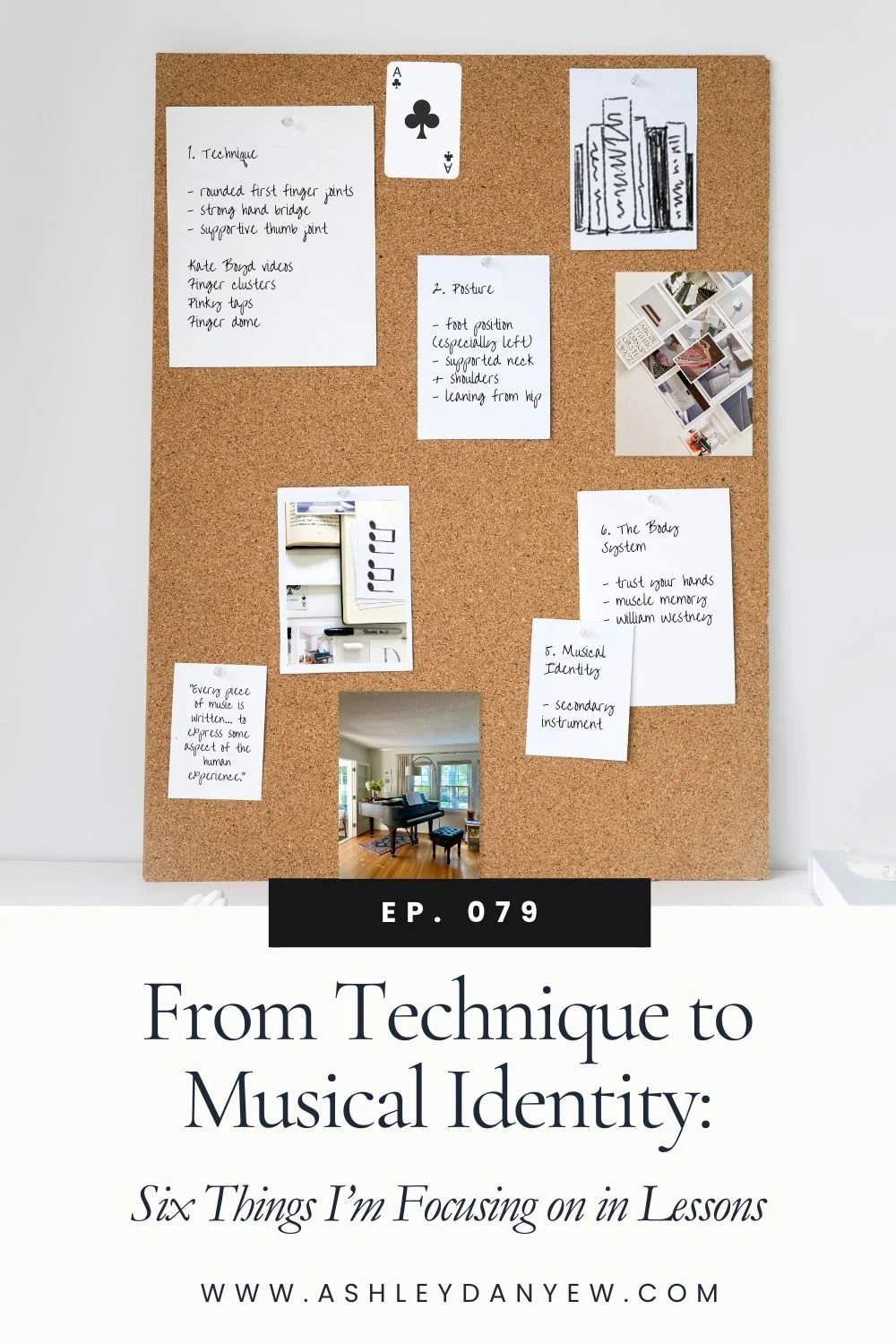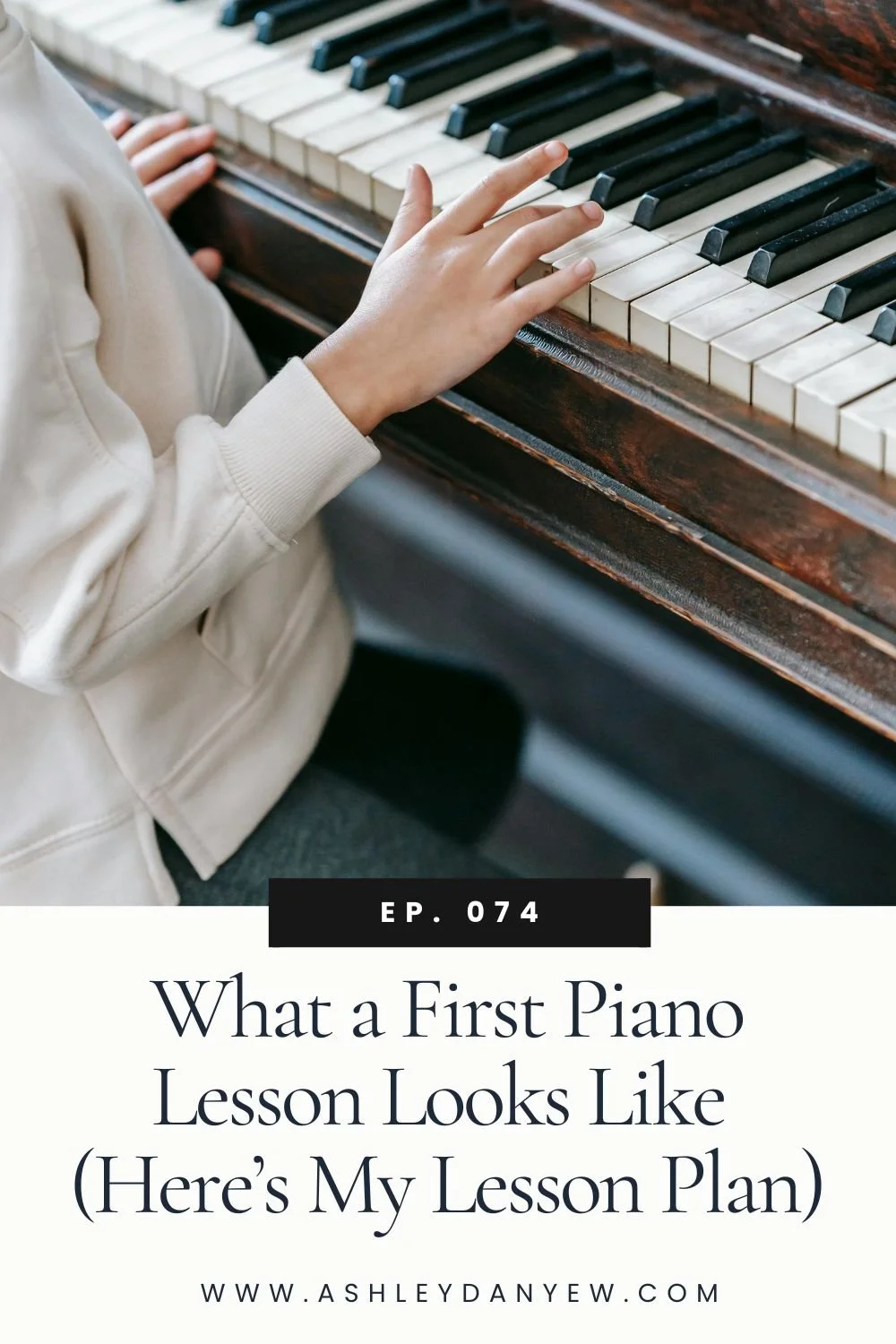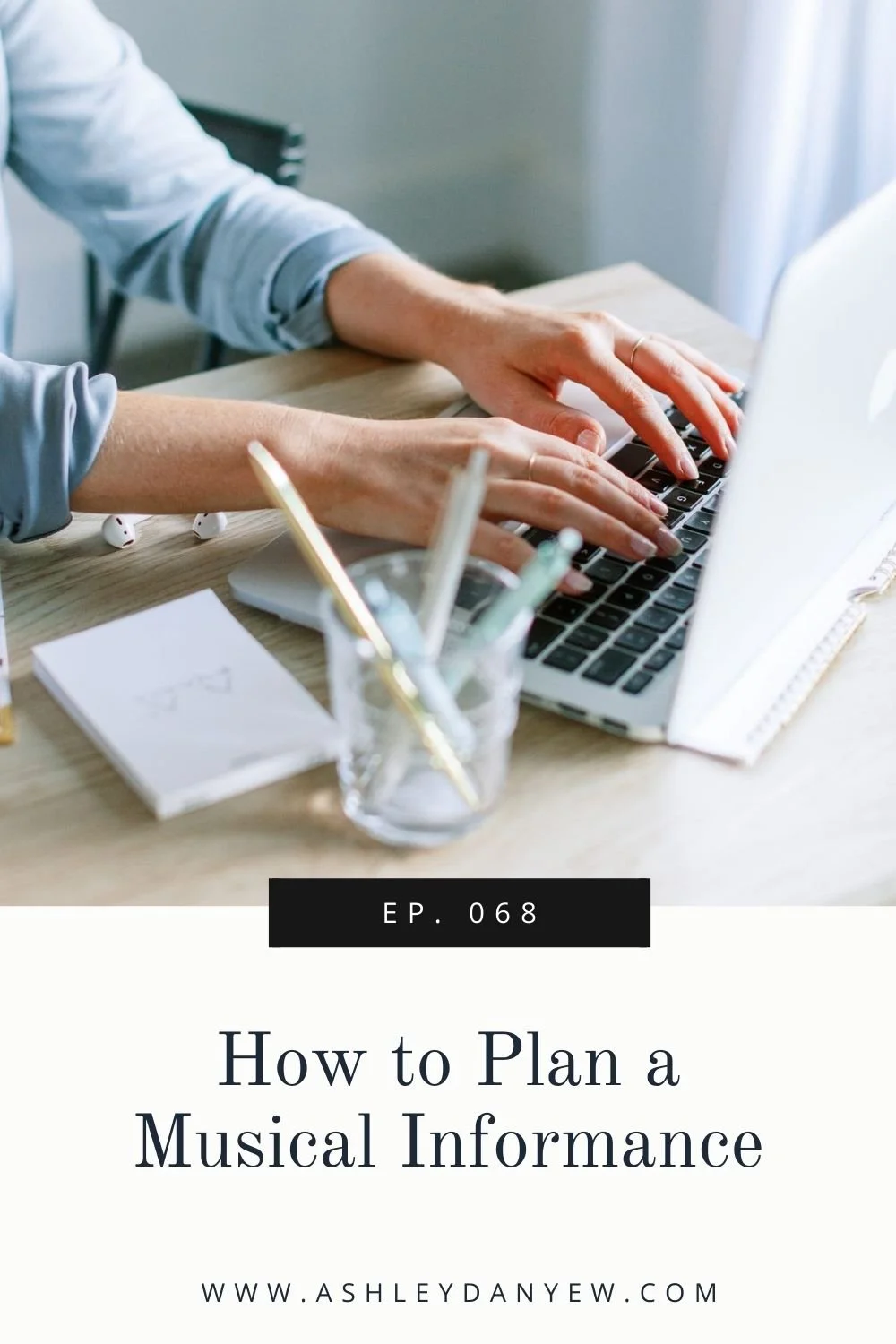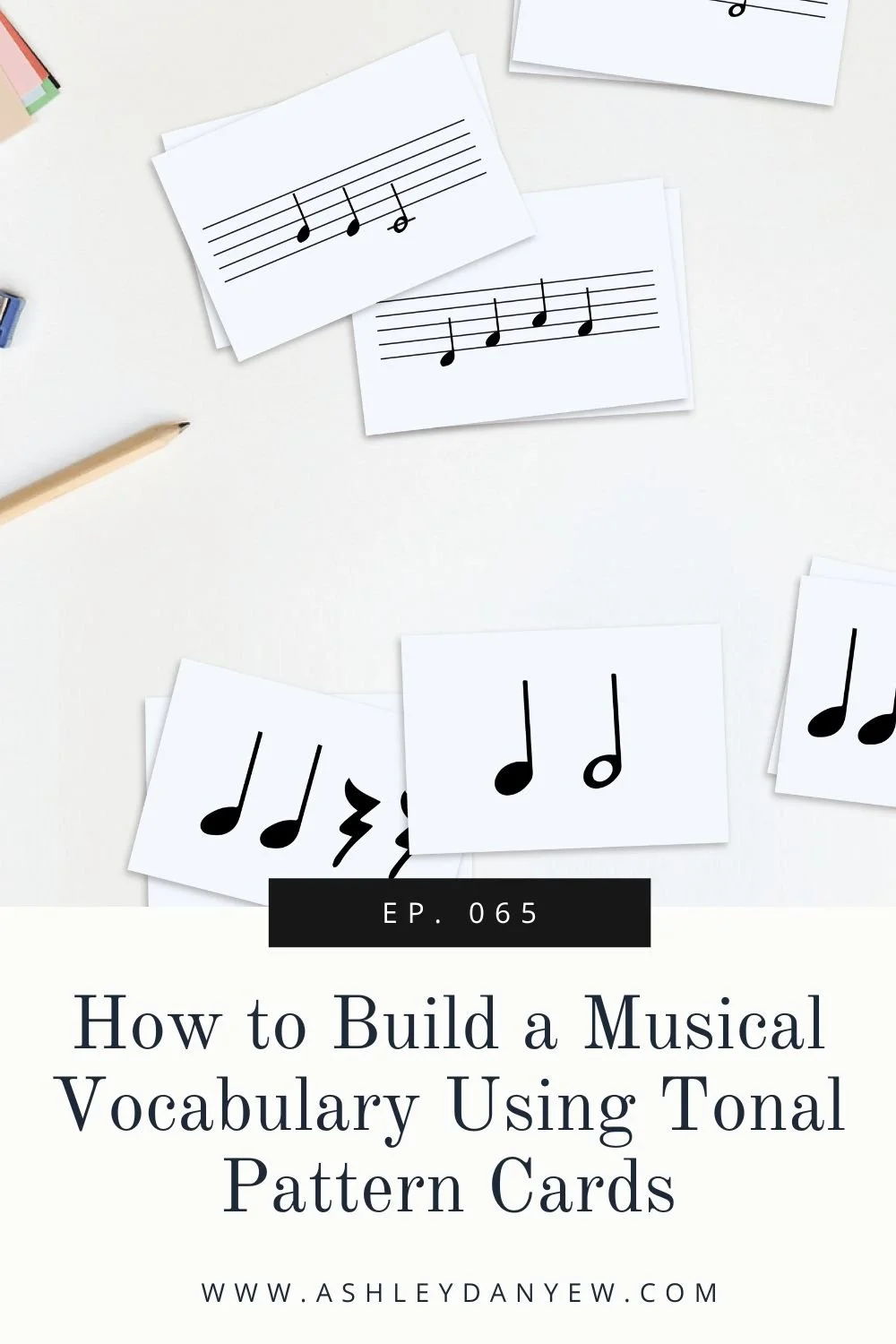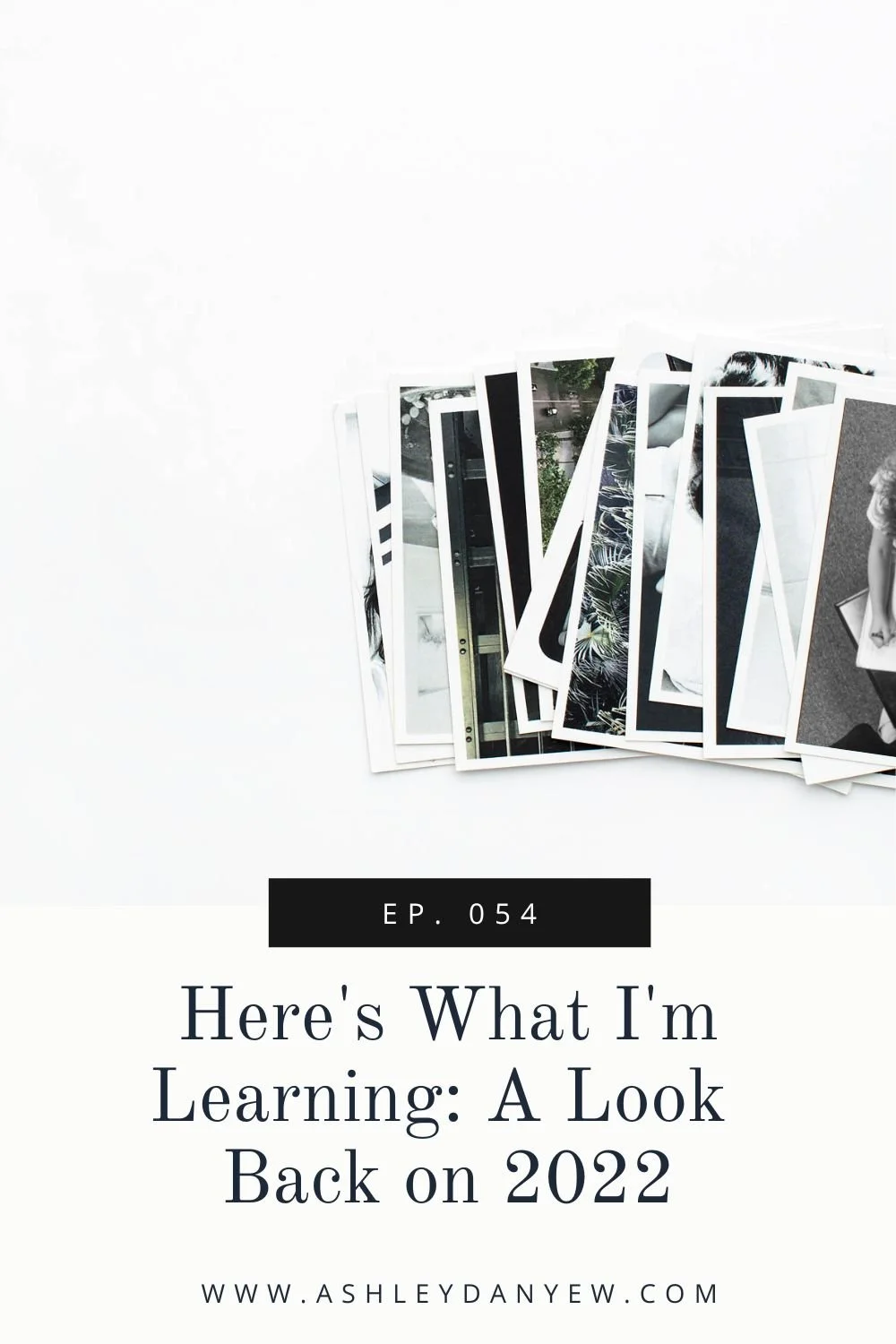Resources Mentioned
*Disclosure: I get commissions for purchases made through links in this post.
Biscuits and Jam interview with Erin Napier, Season 4, Ep. 28
What Is Documentation? (Suzanne Briet)
Social Construction (Oxford Bibliographies)
Social Construction and Pedagogical Practice (Kenneth J. Gergen)
An Interview with Samantha Steitz of Musikal Husky (Musician & Co.)
Ep. 066 - A Winter Improvisation Prompt for Elementary Students
Ep. 018 - This is What an Elementary Piano Buddy Lesson Looks Like
Buckland, Michael. 2018. "Document Theory." Knowledge Organization 45(5): 425-436
"It feels almost like if we don't document it, did it happen? And I need proof that it did."
I was listening to an interview with Erin Napier of Home Town on Southern Living's Biscuits and Jam podcast recently and this statement stayed with me.
"A major part of my personality is documenting," she said, and I nodded to myself.
I've always been this way: collecting and curating, organizing and reflecting, keeping notebooks on the bedside table to write down memories, poems, and story snippets.
As a student, I loved the old-fashioned process of looking something up in an encyclopedia (a real book with entries organized alphabetically) and writing down facts and quotes on index cards, cataloging my research as I went.
During my doctoral studies, I immersed myself in qualitative research practices—interviews, recordings, transcripts, writing memos, and collecting artifacts. All these documents taken together helped me start to see connections, gain new perspectives, and recognize themes as they emerged.
As I reflected on this recently, I recognized that I've carried this practice with me into my music studio. I look for ways to document what's happening, make the intangible moments of music-making more tangible, and collect artifacts.
With this recognition and acknowledgment of documentation as a practice, I turned to the research.
In this episode, I'm sharing:
What I learned about the art and practice of documentation,
Six things I'm documenting in the studio lately,
Practical resources I use to track and organize this data, and
Suggestions for developing this practice in your music studio.
The Art of Documentation
Suzanne Briet, nicknamed "Madame Documentation," was a 20th-century librarian, writer, historian, and poet. She is famous for her definition of a document as "evidence in support of a fact." She explained, “[a document is] any physical or symbolic sign, preserved or recorded, intended to represent, to reconstruct, or to demonstrate a physical or conceptual phenomenon." (source: What Is Documentation?)
Today, eight decades later, our definition of documentation would likely center on our unique perception of this evidence and why we consider it meaningful.
What does this document or artifact represent to us as teachers or learners? What does it reconstruct or illustrate about the learner or the creative process? What phenomena did we experience or witness and why is it significant or meaningful?
These questions are based on the theory of social construction, which suggests that "people construct (i.e., create, make, invent) their understandings of the world and the meanings they give to encounters with others, or various products they or others create." (source: Oxford Bibliographies)
Social construction tells us this is a shared, collaborative process. It's one we do with our students. It's specific to us and situated in our teaching environment. It's informed by culture and community. This informs what we see and how we find it meaningful. (source: Social Construction and Pedagogical Practice)
With that in mind, here are six things I'm documenting in the studio lately and how and why they're meaningful to me as a musician and teacher.
No. 1 - Rhythmic Reading
Earlier this year, I purchased Rhythm Keeper, Vol. I by Musikal Husky (see Ep. 059 for more on practicing rhythm in private lessons). My students love these progressive rhythm exercises and have developed a new level of confidence in their rhythm counting that they are beginning to transfer into their playing.
In recent months, I've taken short videos of some of my students clapping and counting exercises from this book. It's interesting for me to review these recordings later and study their ability to maintain a steady beat, where they hesitate, and when they get so caught up in reading, they automatically go on to the next example without pause.
I also used this book in a buddy lesson with two rising 2nd-grade students. I found it difficult to evaluate how each student was doing in the moment because I was trying to facilitate, establish tempo, etc., but having a video recording helped me study the confidence and accuracy of each student individually.
I keep videos like this in a folder on my computer labeled "Studio Moments: 2023-24." This makes it easy to go back and reference these moments rather than digging through all my personal photos and videos.
Related resource: An Interview with Samantha Steitz of Musikal Husky
No. 2 - Improvisations
I talked about this recently in Ep. 066 - A Winter Improvisation Prompt for Elementary Piano Students. Making quick iPhone audio recordings of student improvisations in lessons helps me stay present, especially when I'm playing or improvising an accompaniment.
Reviewing the recordings later gives me an opportunity to listen critically to the quality of the improvisation, the skills the student is demonstrating, and their creativity at work. I can assess more objectively, which means I have a better understanding of what the student knows and can do. This informs future improvisation prompts and challenges I share with the student.
Another benefit of collecting these artifacts through the years is the ability to compare multiple students' responses to the same prompt, which provides greater insight into the process of musical creativity and stages of music development.
I store these audio files with my other studio files in a subfolder labeled by prompt (e.g. "Snowflake Improv"). If a student improvises on their own in lessons on a regular basis, I create a folder just for them where I save their audio and video improv recordings.
No. 3 - Stories & Conversations
I've mentioned my teaching journal before (see Ep. 018 and Ep. 062). This is where I document interactions, conversations, a-ha moments, and takeaways from my lessons.
I set this up in Evernote: I have a Notebook called "Teaching Journal" and a note for each year. Within each note, I have a heading for each month so I can see when the story or interaction occurred. I try to write down these stories as soon as possible, especially if I'm trying to document a student's words. Sometimes, I'll write it out in an email to myself and then write a longer version in Evernote the next time I'm at my computer.
This has been a helpful practice for reconstructing and preserving a specific moment or experience with a student and it’s been the foundation for several episodes of this podcast.
No. 4 - Off-the-Bench Activities
I was scrolling through my camera roll recently and found several photos and a few short videos of students engaged in off-the-bench activities.
A beginning student arranging musical alphabet cards
A 5th grader chanting the rhythm of Kabalevsky's "Scherzo" as she skips down the hallway after her lesson
A 2nd grader notating a Halloween composition
A student imitating dotted rhythm patterns on a drum set (perks of having a lesson on Wednesday when I teach in the Jazz Room!).
Again, I save these photos in the "Studio Moments" folder on my computer to reflect on throughout the year.
Related resource: Musical Alphabet Cards
No. 5 - Compositions
Compositions are a natural artifact in music teaching and learning—a tangible representation of musical creativity and understanding. I like to take a picture of my students' compositions to record and preserve this moment in their musical development. What will they remember about this experience looking back in a few years?
I talked about my own experience with this as a piano student back in Ep. 056 - The Valentine Composition Project. I shared:
"Despite my hesitancy and uncertainty about this project in the weeks leading up to Valentine's Day each year, I do remember feeling a sense of pride in seeing my musical compositions in written form. And I recognized the value of spending time each year developing our creative music skills, exploring, developing, refining, and learning how to write it down."
I hope my students can experience this, as well.
I like to keep records of my students’ compositions in a subfolder called "Creativity." Here, I have a folder for each student where I keep photos of their handwritten compositions and notation files when I notated their compositions.
No. 6 - Lesson Plans
I've been documenting my lesson plans for 18 months now.
This practice of pre-planning lessons has helped me be more intentional about preparatory and reinforcement activities, a balance of on- and off-the-bench activities, and diversity in the types of musical skills we work on together in lessons: aural skills, reading and rote pieces, musical creativity, theory, technique, and sight-reading.
Documenting my lesson plans has also given me a big-picture view of a student's journey through a particular method book and how the pacing may differ from student to student. In addition, it's helped me remember and reconstruct learning opportunities I used with one student with another who is at that same point in the book.
For more on this topic, listen to Ep. 047 - An Inside Look at My Lesson-Planning Process.
How to Develop a Practice of Documentation
If you'd like to develop a practice of documentation in your music teaching, here are three questions to consider:
What happened? This may be something you're assessing or evaluating in a lesson, something you're watching or listening for in performance. Or, it could be something that happens spontaneously that you weren't expecting, maybe even something that happens in your own practicing. If it captures your attention, think about a way to document it (with a video or audio recording, a photo, or by writing about the experience later). If possible, capture the student's perception of what happened, as well.
How did it happen? Think like a lawyer and build a case based on the evidence you've collected. What does the document prove? Journaling can be helpful here. Think about what led up to the moment you documented. What happened right before? What influences can you trace? What do you hear or see?
Why does it matter? This is where you take a step back and study all the information. What made this moment meaningful, to you, your student, or both? What does it represent or illustrate and why does this matter to you?
This kind of reflection can help you recognize patterns, gain new insights into how we learn, and bring a greater level of care, intention, and curiosity into your practice.
One final thought is to be intentional about what you're documenting and why.
In a 2018 article on document theory, librarian, author, and academic dean Michael Buckland noted, "An object is considered a 'document' if it does, or could, reveal or signify something. A document is expected to be actually or potentially meaningful." (source: Document Theory)
If you're prone to documenting things like I am, be careful about documenting for the sake of documenting without having a clear sense of why it matters.
I'd love to hear from you:
Do you use documentation in your teaching practice? Do you document things as they occur in your practicing? Hopefully, this inspires you to develop this practice in the coming year.

